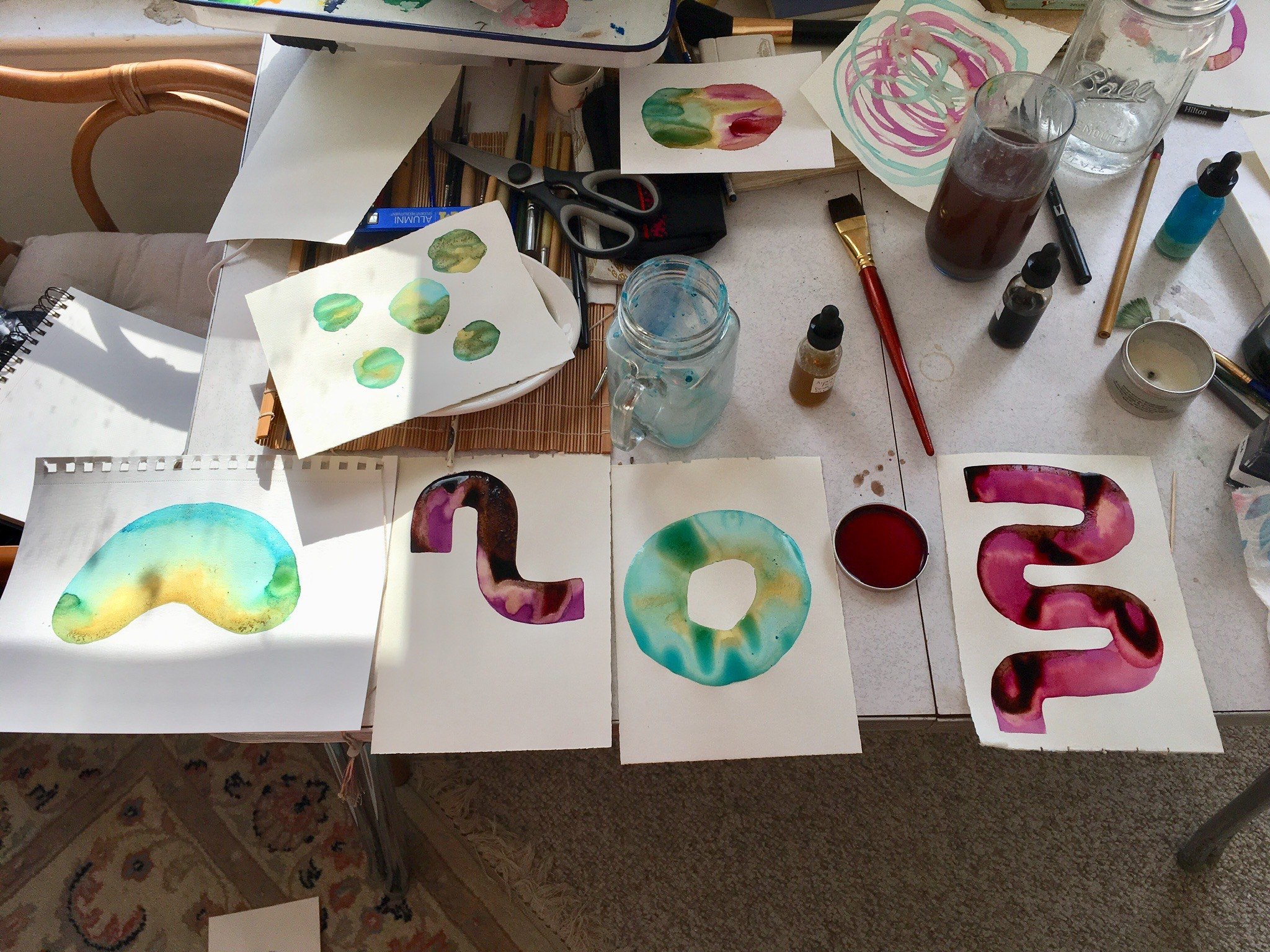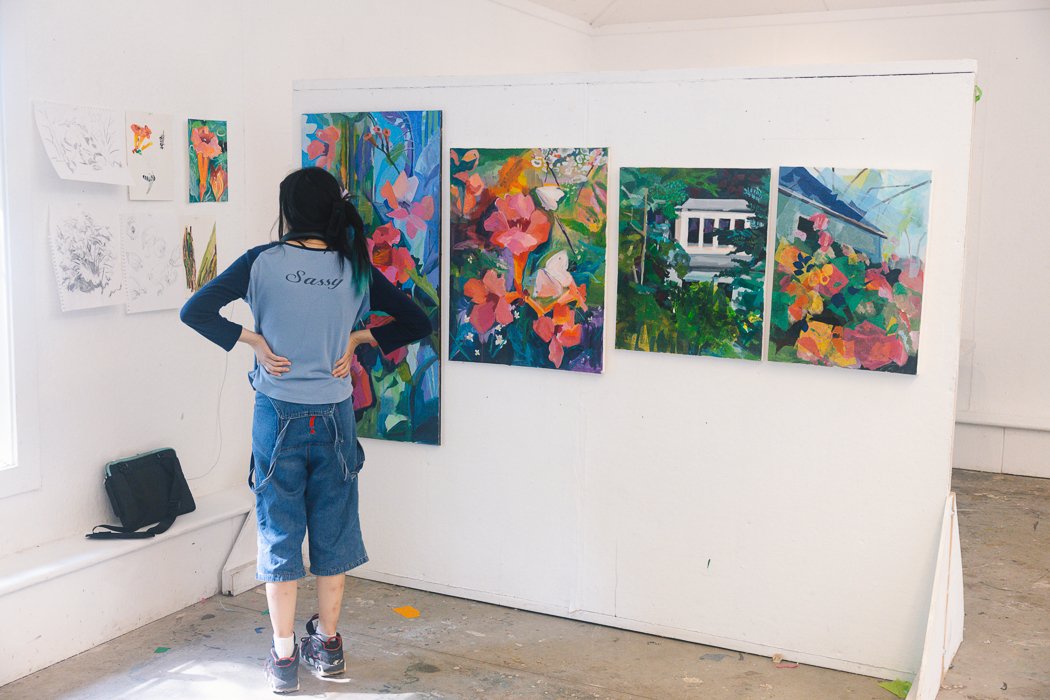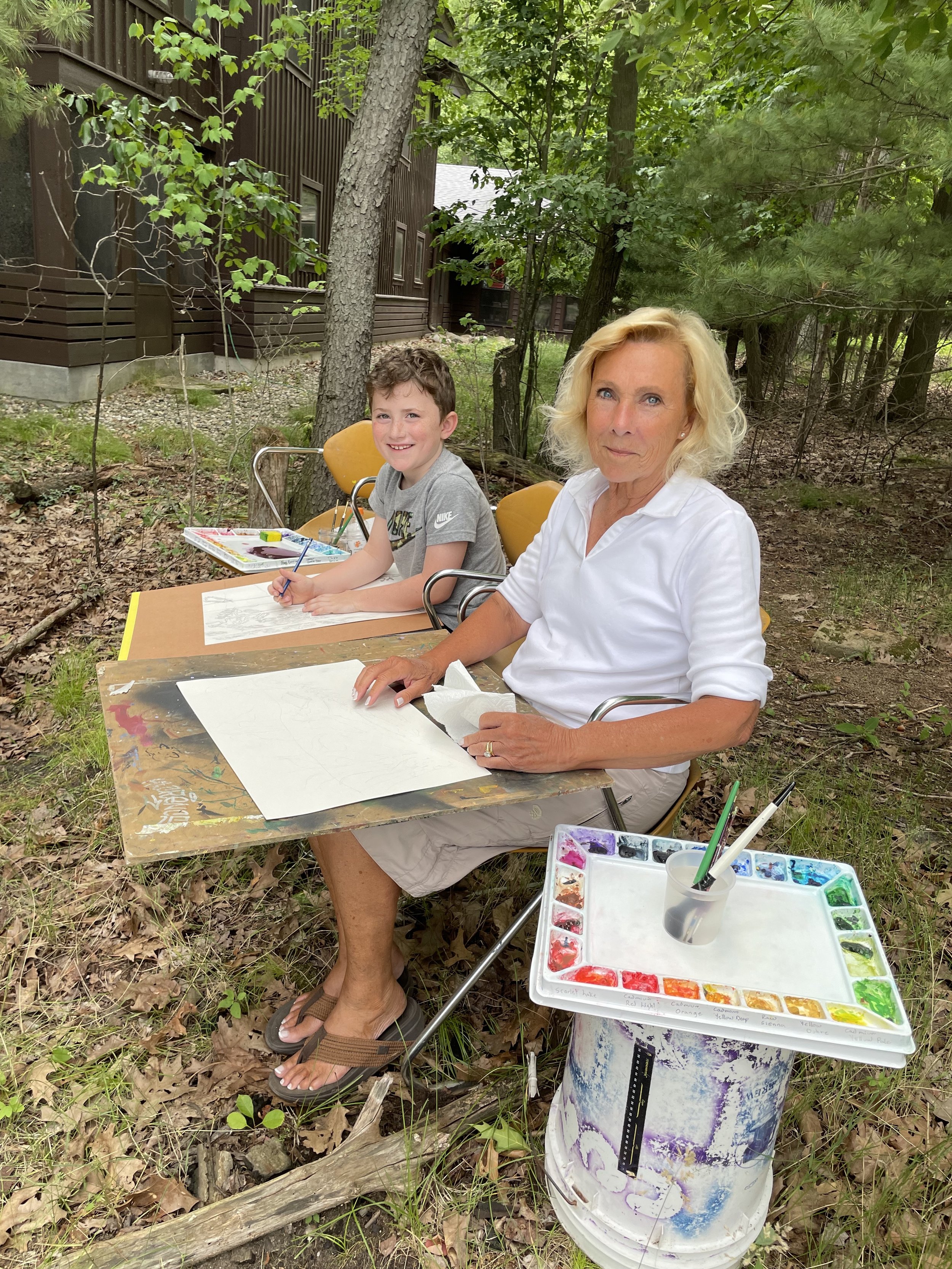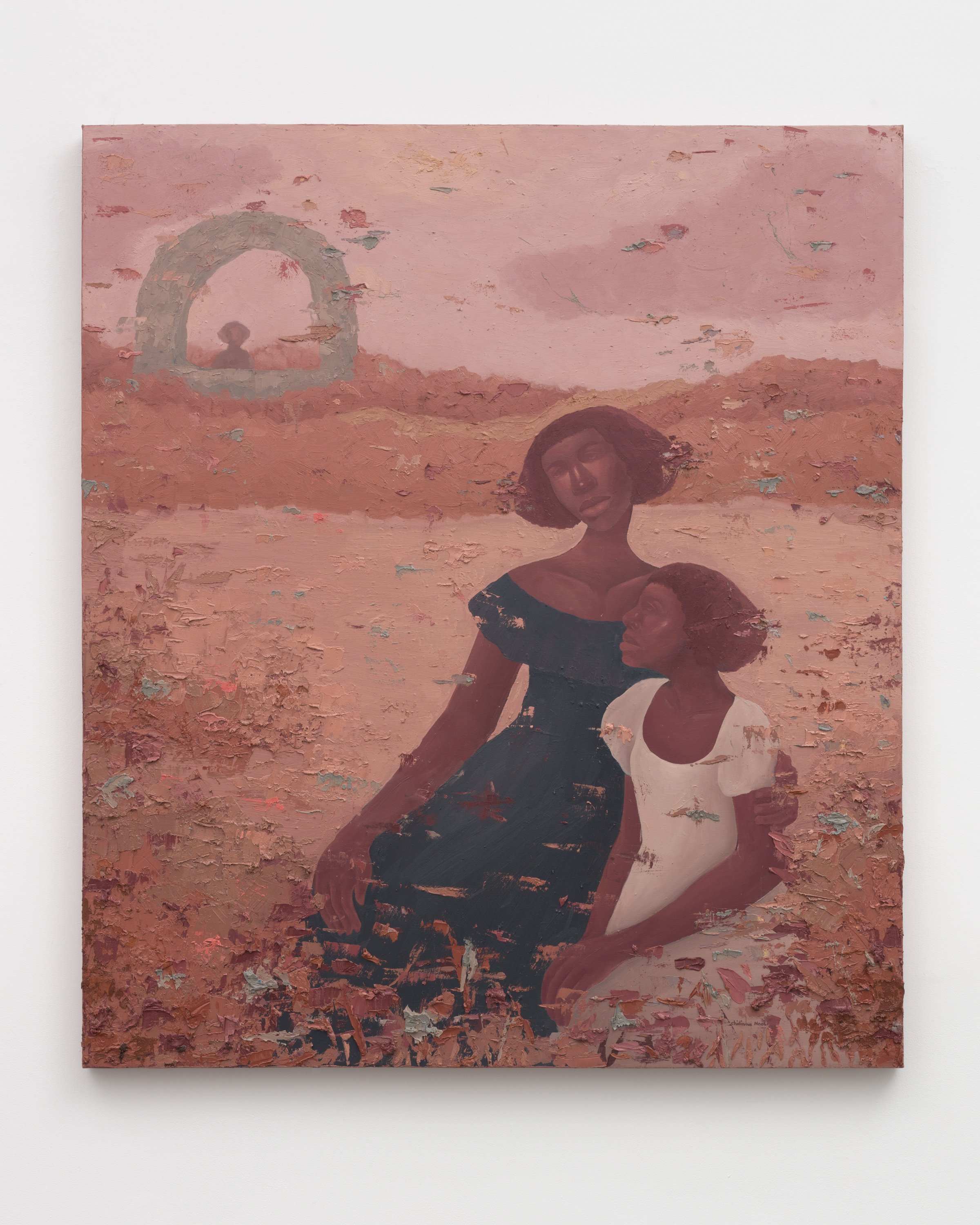Artist Elizabeth Schmuhl on falling in love with new creative forms
Just a few years before folks across the country took to an abundance of crunchy home hobbies ranging from sourdough to papermaking, Elizabeth Schmuhl was trying her hand at natural inkmaking. She wasn’t new to the arts—her prior studies had immersed her in worlds of dance and creative writing, with additional training as a painter. Little did she know as she first stepped into inkmaking, a whole new passion awaited her. The artist swiftly found herself hooked on the earthy nature of inkmaking. Several years later, she was pursuing the form with the same fervor. After a number of exhibitions, metro-Detroit workshops, and the publication of two inkmaking books, she proposed her first Art on the Meadow Workshop in 2023.
While it wasn’t the first place she hosted workshops, she knew Ox-Bow would be an especially hospitable place for the medium. Over a decade prior, Schmuhl had taken a class on campus. Keen to nurture her daughter’s propensity for the art, Schmuhl’s mother had encouraged her to take a watercolor course. While some sensibilities carry over when transitioning from watercolor to inkmaking—both are water based—Schmuhl emphasized that ink holds its own temperament. Where watercolor maintains a consistent coloration, inkmaking is prone to variation. Over time the color tones shift, and even on application, plant matter creates its own discrepancies. “I love that element of surprise that comes with the ink,” Schmuhl relished.
During her early years in the practice, Schmuhl made inks from materials collected from her family farm. This became the premise of her book The Four Seasons. “It was a way to understand the place, for me,” Schmuhl explained, and by proxy a way to connect with her grandparents who had tended the farm and passed away before she was born. Interacting with the land fostered a sense of connection to the ancestors she hadn’t been able to meet, deepening her sense of place and self.
Eventually, her inkmaking stretched beyond the acres of her family’s farm. While traveling, Schmuhl makes ink samples and records tests along the way. “It's really fun to just experiment and see what happens with the ink on the paper,” said Schmuhl. On a trip to Italy, she even made ink from seawater and flowers. And it’s not just materials for the ink that she forages. Sometimes even her brushes—in the form of sticks and, well, brush—are found in her surroundings. Her color palette has expanded even further, geographically speaking, through trade with other inkmakers who have gifted her samples, allowing her pigments that would’ve otherwise remained out of reach. One of her favorites comes from her friend Jason Logan of The Toronto Ink Company and author of the book Make Ink: A Forager’s Guide to Natural Ink. The ink, made from the residue of a kerosene lamp, is cleverly titled Lamp Black. “It's such a deep black, it kind of crawls over the other inks. It’s really beautiful,” Schmuhl said, her tone indicating reverence.
The variety of colors available from natural materials continues to spark Schmuhl’s sense of wonder and her propensity to share the craft with others. From the electric pink of pokeberry to the ocean-like blue of copper, Schmuhl is eager to share her admiration for making natural inks and transferring them to paper. For those interested in exploring the alchemic art of inkmaking, join Elizabeth Schmuhl on the meadow this summer in Natural Ink Making on July 12, 2025.
Elizabeth Schmuhl is a multidisciplinary artist who creates work that explores nature, movement, and memory. Schmuhl deeply investigates the natural world, its cycles, and entropy, all of which inform her work. Schmuhl is a multidisciplinary artist and the author of Premonitions (Wayne State University Press). Her book of paintings created with natural ink from her centennial fruit farm in Benton Harbor, The Four Seasons, is out from Greying Ghost Press. Fishes of the Great Lakes, a book containing paintings with natural inks made entirely from the Great Lake watershed and materials that surround it, is her newest art book. She has shared her work globally and holds an MFA and a BA (University of Michigan). Schmuhl has taught at University of Michigan, Wayne State University, and elsewhere.
Using Ethical Storytelling techniques, this article was written by Shanley Poole, Engagement Liaison & Storyteller, based on an interview conducted with Elizabeth Schmuhl in 2024. The article was originally published in our 2025 Experience Ox-Bow Catalog.
































































































